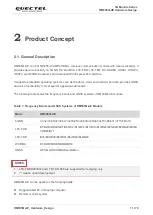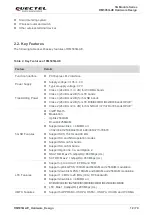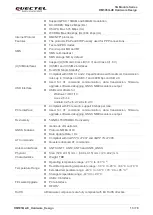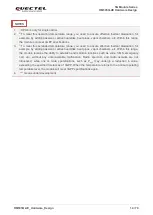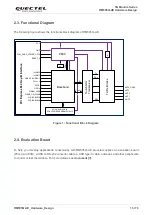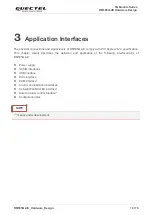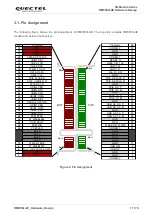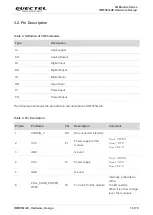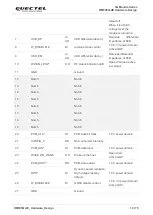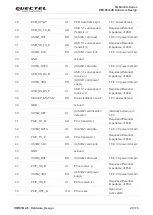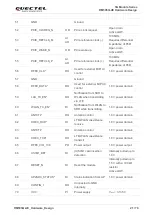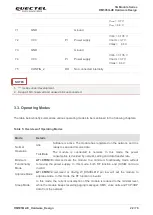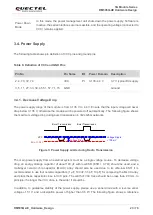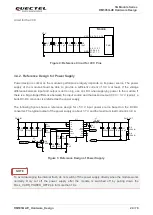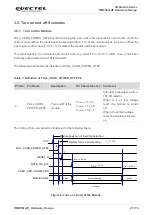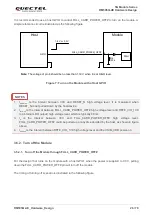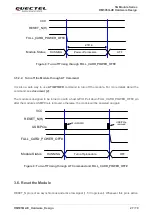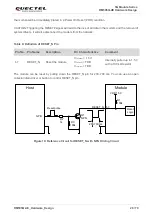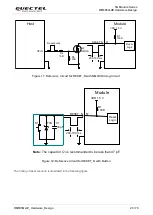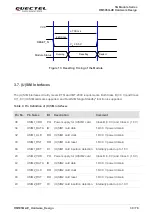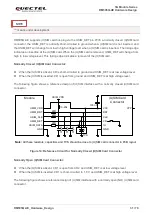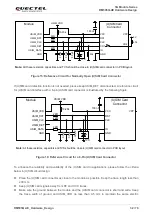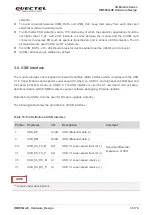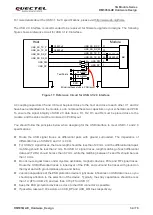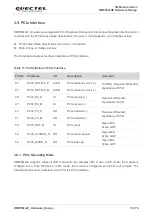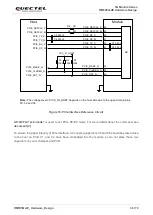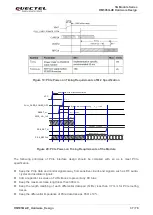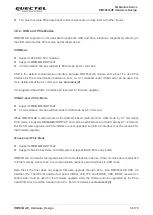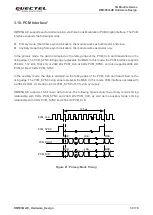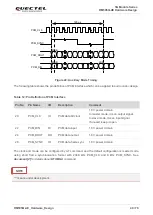
5G Module Series
RM505Q-AE Hardware Design
RM505Q-AE_Hardware_Design 25 / 79
3.5. Turn on and off Scenarios
3.5.1. Turn on the Module
FULL_CARD_POWER_OFF# asynchronous signal is an active low input that is used to turn on/off the
entire module. When the input signal is asserted high (
≥ 1.19 V) the module will be turned on. When the
input signal is driven low (
≤ 0.2 V) or Tri-stated, the module will be shut down.
This input signal is 3.3-V-tolerant and can be driven by either 1.8 V or 3.3 V GPIO. Also, it has been
internally pulled down with a 100 kΩ resistor.
The following table shows the definition of FULL_CARD_POWER_OFF#.
.
Table 7: Definition of FULL_CARD_POWER_OFF# Pin
The timing of turn-on scenario is illustrated in the following figure.
VCC
RESET_N
Module power-on or insertion detection
USIM1_VDD / USIM2_VDD
Module Status
FULL_CARD_POWER_OFF#
RFFE_VIO_1V8
System turn-on and booting
V
IH
≥
1.19 V
1.8 V or 3.0 V
System booting
Inactive
Active
t
power-on
t
turn-on
t
booting
68 ms
19.7 s
t
USIM
t
0
Figure 6: Turn-on Timing of the Module
Pin No. Pin Name
Description
DC Characteristics Comment
6
FULL_CARD_
POWER_OFF#
Turn on/off of the
module.
V
IH(max)
= 4.4 V
V
IH(min)
= 1.19 V
V
IL(max)
= 0.2 V
Internally pulled down with a
100 k
Ω resistor.
When it is at low voltage
level, the module is turned
off.
When it is at high voltage
level, the module is turned
on.

